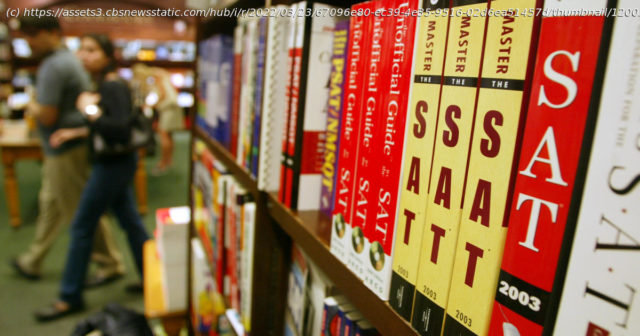The SAT will only be available digitally, starting in March — and it’ll be shorter.
Over nearly a century, millions of American high school students have sharpened pencils and cracked open pamphlets to take the SAT. But this spring, they can leave the pencils at home. , the College Board’s exam will only be available digitally, as U.S. students join their international peers, who moved to the digital exam last year.What’s different in the digital SAT?
The new test will also be significantly shorter and give students more time to answer each question. High schoolers, however, report mixed emotions about the new format.
« We talk about it all the time, » said Ellie Mancini, a high school junior. « Some of us like it better online. Some of us don’t want it at all. But I think a lot of us just want to get it over with. »
Mancini plans to take the SAT for the first time this May. She doesn’t plan to do any formal preparation ahead of the exam, but she did take the Preliminary SAT, or the PSAT, digitally in the fall. She said she would have preferred the option of taking it on paper.
« I think it’s kind of ridiculous to have to do math online and do it in your head, or do it on a scrap piece of paper, » Mancini said.
The test itself has also gone through major shifts. Reading passages are much shorter, a calculator can be used for the entire duration of the math portion and the total testing time has shrunk from three hours to two. Students have the choice to use a tablet or a laptop.
The new version is adaptive, meaning questions change depending on how the student performs as the test progresses. This also increases test security, since every test is unique. Priscilla Rodriguez, who oversees the SAT and PSAT divisions at the College Board, highlighted this as a major benefit of the digital exam compared with its paper predecessor.
Adaptive testing makes the test shorter which Rodriguez said brings « the stress levels down for students. » Students taking the digital exam « feel like they were able to show what they’ve learned in reading, writing and math and not show how quickly they can answer questions, » she said.
Junior Olivia Padro, who used a tablet to take the digital PSAT, said she preferred the digital version to pencil and paper, especially an on-screen indicator saying how much time remained.
« Instead of me looking up at my teacher every five seconds to know how much time I have left in the session, it was all provided for me on my iPad, » said Padro, 16.






